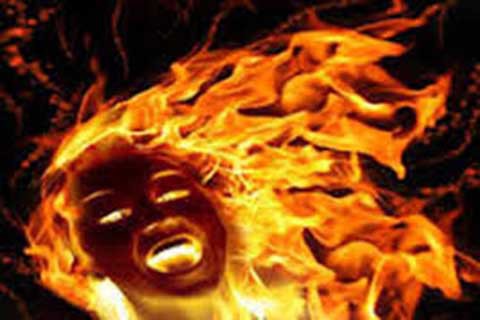
Dowry deaths in India are becoming very prevalent in recent days. Dowry is technically illegal in India since the year 1961 after the dowry prohibition act of that year. It is so sad that there have been lakhs of dowry deaths happening in India even after 60 years of prohibiting the act. There have been 6,450 deaths from dowry harassment in the year 2022 alone. We could witness dowry death cases casually in the daily newspapers, and could also see yet no action is being taken in most cases. This leads to a sad reality, which the upcoming generation is not supposed to witness, and hence, immediate action must be taken on this issue.
In 2021, reported dowry death cases in India amounted to nearly 6.8 thousand. A dowry-related crime causes the death of a woman every 90 minutes, or 1.4 deaths per year per 100,000 women in India. Data from the National Crime Records Bureau (NCRB) shows that 13,479 instances were reported in 2022 under the Dowry Prohibition Act, 1961. 6,450 dowry deaths were reported in 2022 during the same time. Also notably, In 2021, the northern state of Uttar Pradesh in India had the highest number of reported dowry deaths with more than two thousand cases registered with the authorities. The country recorded nearly seven thousand cases of dowry related murder cases that year.[1]

Recently, a few weeks back, a 25 year old woman had been murdered by her husband as a result of suspected non provision of dowry. The husband had strangled her to death and had allegedly absconded from the place after the incident. The couple had got married before three years, and, if this issue is proven that it is a dowry death, it will be purely an offence since the act says, “Where the death of a woman is caused by any burns or bodily injury or occurs otherwise than under normal circumstances within seven years of her marriage and it is shown that soon before her death she was subjected to cruelty or harassment by her husband or any relative of her husband for, or in connection with, any demand for dowry, such death shall be called “dowry death”, and such husband or relative shall be deemed to have caused her death.”
Whoever commits dowry death shall be punished with imprisonment for a term which shall not be less than seven years but which may extend to imprisonment for life. If any person, after the commencement of this Act, gives or takes or abets the giving or taking of dowry, he shall be punishable 6 [with imprisonment for a term which shall not be less than 7 [five years, and with fine which shall not be less than fifteen thousand rupees or the amount of the value of such dowry, whichever is more]: Provided that the Court may, for adequate and special reasons to be recorded in the judgement, impose a sentence of imprisonment for a term of less than 8 [five years]
The fundamental right of right to life, which is provided by the Constitution of India under article 21, is breached here by taking away the life of the woman for no legitimate reason. Violation of this right is an offence punishable, and hence, the victim should get fair compensation and justice.
In the case of a dowry death in the year 1988, one Mr. Om Prakash Aggarwal, in his suit, claimed that his sister Sudha, who married Rajesh Goel of Vijay Park, Delhi on December 7, 1996, was subjected to dowry-related harassment from her in-laws. When Sudha visited her parents’ home in 1998, she filed a lawsuit against her in-laws in the Raghunathpur, Purulia court under sections 498 A/406 IPC. On August 4, 1998, a settlement allowed her husband and in-laws to reclaim her, nevertheless. Around 11 p.m. on September 4, 1998, Sudha’s in-laws informed a Dhanbad-based relative of her death. After learning of his sister’s passing via a relative, the plaintiff travelled to Delhi.[3]
“Dowry under Code of Criminal Procedure, 1973
Giving and receiving dowry in India is a criminal offence and the criminal proceeding of enquiry and investigation by the police and magistrate for the offence is done under section 174 and section 176 of the Code of Criminal Procedure, 1973. Under the amendment of 1983 in the ActAct, it is mandatory for the police to send the dead body for a post-mortem examination if the death has occurred within seven years of marriage and under any dubious circumstances. This section also gives power to the executive magistrate to conduct an enquiry into the death of a woman under such circumstances.
Dowry under the Indian Evidence Act, 1872
To empower women more against dowry, section Indian Evidence Act, 1872 was amended by adding 113(b) in it. It deals with the burden of proof on the offender if harassment or cruelty or both has been done in relation to dowry demand, and it should have been done soon before the death. It is noteworthy that death will fall under the dowry death category only if it has occurred within seven years of marriage.”[4]
In the 1988 case, the NHRC issued various guidelines including directing the officers to take up the issue as per the given time, and asked the Sub Divisional Magistrate (SDM) to conduct the inquiry within the prescribed time.[5] The 1986 amendment of the Dowry Prohibition Act of 1961 required the police and a judicial magistrate to investigate every unnatural death of a woman married less than seven years. After dowry being criminalised, the Indian Parliament has criminalised dowry-related violence against women as well. The Indian Penal Code, amended in 1983, outlaws dowry-related cruelty by the husband and his relatives. Also, the recent one is a case where the victim died unnaturally, this leads to a suspicion of the circumstances of her death. Hence, the NHRC is requested to follow the aforementioned guidelines and take up the issue in order to provide justice for the victim and her family.
Hence I have filed an appeal to NHRC to exercise its powers under Section 12 (a) of the Protection of Human Rights (Amendment) Act, 2019, and take suo moto cognizance of this incident and initiate an independent inquiry through NHRC’s investigation wing.
Shreshta B is a student of Tamil Nadu National Law University, 1st year B.Com LLB (Hons), studying in the first year of a five-year law program.
[1] https://www.statista.com/statistics/633011/reported-dowry-death-cases-by-state-india/#:~:text=Reported%20dowry%20death%20cases%20in%20India%202021%2C%20by%20leading%20state&text=In%202021%2C%20the%20northern%20state,related%20murder%20cases%20that%20year., (21/01/2024)
[2] https://www.statista.com/statistics/632553/reported-dowry-death-cases-india/, (21/01/2024)
[3] https://nhrc.nic.in/press-release/nhrc-recommends-action-against-sdm-and-police-officers-dowry-death-case, (21/01/2024)
[4] https://www.indiafilings.com/learn/dowry-in-india/, (20/01/2024)
[5] https://nhrc.nic.in/press-release/nhrc-recommends-action-against-sdm-and-police-officers-dowry-death-case, (21/01/2024)













































